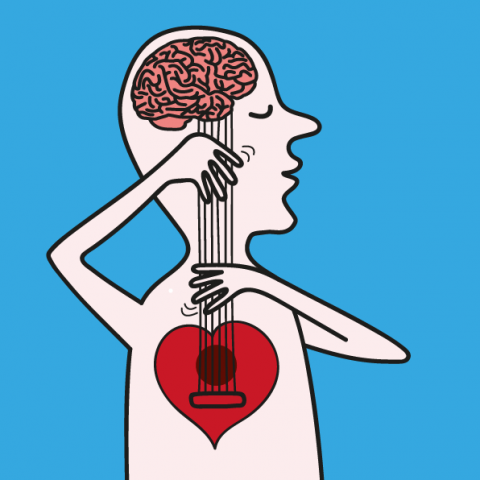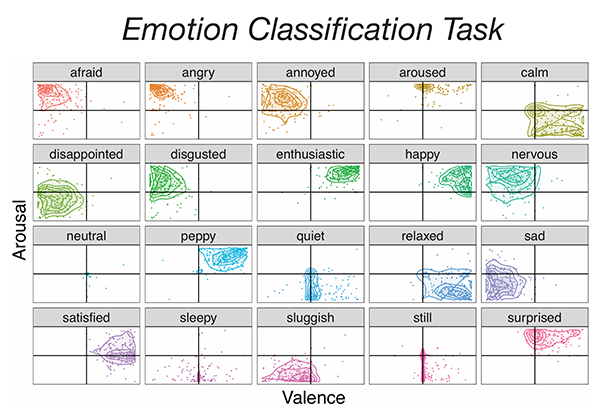 As is often the case with complex psychological processes, the brain basis of love remains a mystery. Although neuroscientists have studied a wide variety of phenomena that could colloquially be called “love,” such as maternal care, platonic friendship, social support, romantic relationships, and even sexual intimacy, part of the confusion is that the exact definition of love is hard to pin down. After all, we’d hope that the neural circuits involved in childcare would be distinct from the circuits underlying romance.
As is often the case with complex psychological processes, the brain basis of love remains a mystery. Although neuroscientists have studied a wide variety of phenomena that could colloquially be called “love,” such as maternal care, platonic friendship, social support, romantic relationships, and even sexual intimacy, part of the confusion is that the exact definition of love is hard to pin down. After all, we’d hope that the neural circuits involved in childcare would be distinct from the circuits underlying romance.
Just how diverse is the taxonomy of love? As a silly but illustrative demonstration, let’s perform a brief survey of pop music. We can quickly see that the experience of love co-occurs with a wide variety of emotions. Artists express tortured cries of hurt, unadulterated contentment, grief and loss, loss of sanity, unconditional affection, quiet joy and nostalgia, and abandonment. Therefore, it’s unsurprising that scientists have fundamental disagreements about the definition of emotion.
For example, are there a fixed number of basic emotions that all humans share, or are emotions constructed in a context-specific way? To what extent are human emotions similar to the emotions of other animals? At what level does the brain encode information about emotions – that is, are there neurons or brain regions that are specialized for processing emotion, or does emotion emerge from more complex circuits, networks, and systems? We haven’t yet found definitive answers to these questions.
Another critical problem is that emotions are intrinsically difficult to measure. For that reason, Brown University’s Social and Affective Neuroscience Lab, directed by Dr. Oriel FeldmanHall, is actively developing new methods for studying emotions. In one ongoing project, we have created a novel technique for measuring how emotions change across time, which allows us to study how emotions dynamically affect decisions to help or harm others.

Social and Affective Neuroscience Lab / Brown University
Our research also examines how psychiatric disorders affect the brain’s ability to process emotion. By studying how disorders like anxiety impact the brain, we hope to gain a deeper understanding of how people make decisions in social contexts, like learning whether someone is trustworthy. Although we have not applied these methods to study love, we hope that they will help advance scientific understanding of emotion more generally.
Many people perceive scientific knowledge as a definitive body of facts – things that are known with a great deal of certainty and confidence. While this is true, it’s equally important to acknowledge that the scientific endeavor is also about understanding the limitations of human knowledge given the tools we have available to observe and measure our world. At the risk of spouting truisms, love is complicated! So, we shouldn’t be surprised that we haven’t yet developed the right methods that will help us gain deep insights into this emotion.
Moreover, we should resist the impulse to believe simple stories about how the brain generates the experience of love. For example, it’s a nice pop science story that dopamine is the “short-term pleasure” neurotransmitter involved in short flings, and that serotonin is the “long-term bliss” neurotransmitter involved in stable relationships. This theory is an oversimplification, as dopamine and serotonin interact with each other in complex ways that we’re only beginning to measure in humans.
Likewise, many pop science publications sell the story that oxytocin and vasopressin are the brain’s “love” neurotransmitters. To be fair, these claims are based in rigorous scientific studies comparing monogamous prairie voles, which have a lot of oxytocin and vasopressin receptors in the brain’s reward network, and polygamous meadow voles, which don’t. However, this doesn’t tell the whole story. Studies have also shown that administering high doses of oxytocin to baby prairie voles actually hinders monogamous mating. Oxytocin and vasopressin have sex-specific effects in macaques’ prosocial/antisocial behavior, and oxytocin can increase human aggression in “us versus them” contexts. Clearly, there’s a lot out there that we don’t know, and that means that it’s too soon to make grand, overarching conclusions about how love works in the brain.
My personal recommendation for celebrating Valentine’s Day? Don’t worry too much about the neural processes underlying the experience of love – it’s not particularly romantic. My recommendation for being a more critical consumer of scientific knowledge? The brain is a complex organ, so be wary of neat narratives purporting to explain complex psychological phenomena, including love.
Jae-Young Son is a first-year Ph.D. student interested in how people use social and affective information to inform decision-making. When not thinking about science, Jae enjoys singing at unreasonably loud volumes, reading pretentious existentialist philosophy, and going on spontaneous long-distance bike rides and hikes.